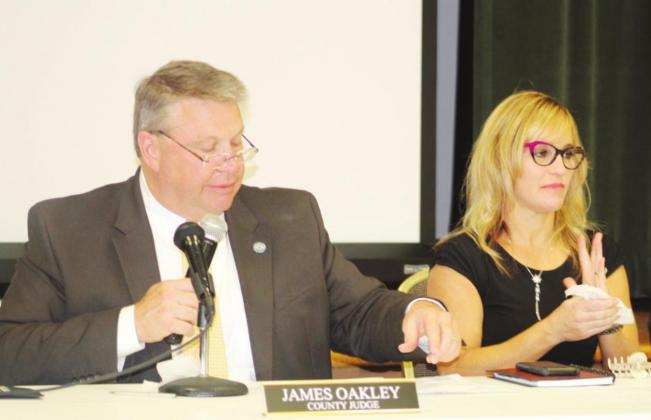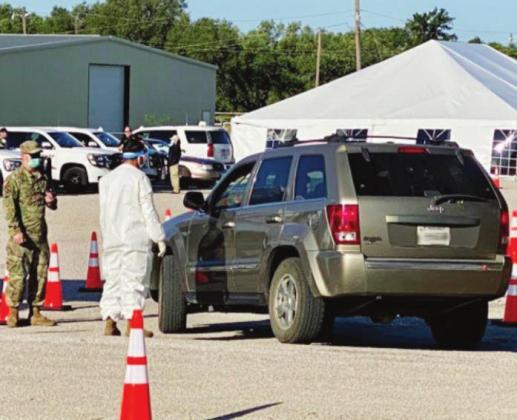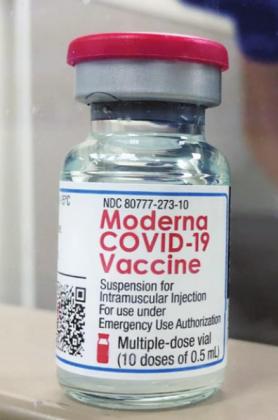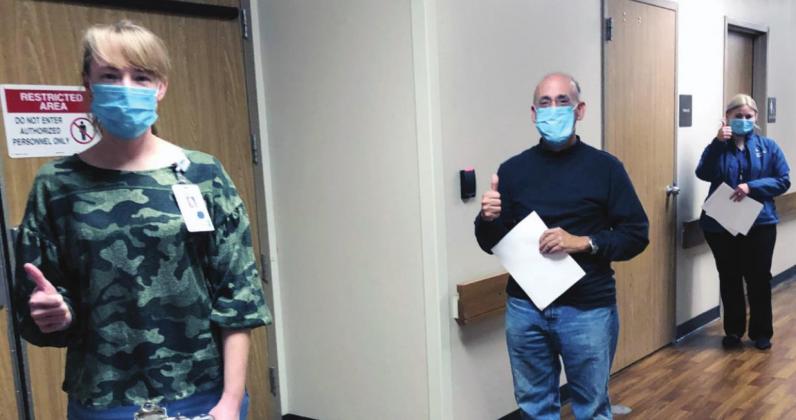The coronavirus pandemic exerted its influence on 2020 as hints of its descent on the country and local communities began in February and crescendoed with a series of public edicts prompted by local and state health disaster declarations.
From state mandated restrictions and across-the-board event cancellations to forced schooling from home and business closures, the pandemic’s ramifications altered the landscape of everyday life.
As the coronavirus scare loomed over every aspect of life, several other events also garnered attention in 2020, including a rash of arsons in Burnet and northern Burnet County, a record-breaking presidential election turnout and eventually signs of an economic recovery, re-opening of businesses, healthcare and nursing facilities as well as a return to a more normal education environment for children.
Taking a look at the top stories of 2020, ultimately, could be summed up as a test of resilience and adaptation of the human spirit.
In February, health officials began introducing the threat of COVID-19 known as the coronavirus to the public.
Officials revealed the coronavirus disease first surfaced in 2019 and differs from the previous strains commonly circulated among humans and cause mild illness, like the common cold, according to the Center for Disease Control (CDC). An outbreak of respiratory illnesses was first identified in Wuhan, Hubei Province, China.
Cases of COVID-19 were also being reported in a growing number of countries internationally, including the United States, which resulted in a mass scare about a potential pandemic among public health and school officials and the national media.
As concerns mounted in the spring about the potential spread of the coronavirus in the United States, local health and school leaders took the lead on prevention, information and reassurances for the public.
To mitigate the spread, community leaders began anticipating steps to limit exposure, enhance sanitization efforts and modify public behavior.
In mid March, Governor of the State of Texas, Greg Abbott issued a proclamation certifying that COVID-19 poses an “imminent threat of disaster” in the state and declared a state of disaster for all counties in Texas. A “run” on groceries led to limits on goods at the Burnet and Marble Falls H-E-Bs.
What followed involved the city of Burnet limiting public access to facilities and the Burnet Chamber of Commerce canceled events including the Bluebonnet Festival.
Other cancellations were the Burnet Air Show. Fort Croghan Museum, the Herman Brown Free Library and other venues shuttered their doors.
Retail and restaurant venues closed and opted for curbside and/or online purchasing options. Online video meetings among businesses, government entities and nonprofit groups became the mode of communication to minimize human contact.
In March and April, state-mandated “stay-at-home” orders took shape. The edicts defined “nonessential,” those who should either suspend work or do so from home, and “essential” workers, which included people in the healthcare industry, infrastructure, childcare, food, transportation and construction field.
Nursing homes and hospitals including Ascension Seton Highland Lakes in Burnet and Baylor Scott & White Hospital in Marble Falls prohibited visitors. Burnet Consolidated Independent School District waved testing requirement, opted for “remote learning,” which put students onto school-issued laptops for their classroom studies at home.
All Burnet CISD extra-curricular activities and training were suspended. Public schools provided free curb-side pickup lunch meals. The district canceled a planned bond election as well.
Through the summer, a number of event considered large gatherings such as the Burnet Concert Series and Utopia Music Fest were canceled.
The state closed Inks Lake State Park, and the Lower Colorado River Authority closed its lakeside venues along the Colorado River, however, public boat access remained open provided by Burnet County and Llano County entities.
As the new school year began in late October, BCISD re-opened campuses for in-person learning with a remote option for families. By Halloween, the district reported that only 15 percent of students were learning from home, while the rest came back to school.
Churches were exempt from the state order, however, a number of local churches voluntarily suspended in-person worship services.
In May, the state recommended a 50 percent opening of some businesses in the wake of Gov. Greg Abbott’s phased back-to-normal proclamation. Federal and state leaders began advocation and distribution of Coronavirus Aid, Relief, and Economic Security (CARES) Act funding for communities, providing everything from resources, equipment and aid to healthcare facilities to supplemental funding to businesses to pay workers.
In June, Burnet County reported its first COVID-19 fatality — A 57-year-old woman who was a resident of Bertram Nursing Home & Rehabilitation Center. She had passed away Tuesday, May 26, after having been bedridden for an extended time with cardiovascular disease as well as paralysis from a stroke.
The State Department of Health Service began an online reporting system of positive cases, shared by Burnet County officials.
Deaths ranged from nursing home patients with pre-existing conditions to elderly residents, who succumbed to respiratory and other health complications.
As of Dec. 29, the county reported 20 fatalities with 1,702 positive tests; healthcare workers had administered 18,439 viral tests and 1,049 antigen tests and 1,485 total recoveries.
Face covering and gathering restrictions as well as other state health-related mandates are slated to remain in place until the number of positive tests is reduced to 20.
The state continued to re-extend the health disaster declaration as a vehicle for funding, aid and restrictions, throughout the year as many as 10 times in several week intervals.
By the mid-to-late fall, much of the school district and businesses as well as previously closed venues such as bars, the Burnet Community Center and city and other government offices had re-opened but at limited capacity with “social distancing” guidelines to reduce non-household member contact.
The Burnet hospital and clinics re-instated non-emergency procedures.
In the aftermath, the impact of limitations and closures proved financially devastating for a number of businesses including the largest retail outlet in Burnet, Bealls/Gordmans on Texas 29.
The business filed bankruptcy and closed for good.
On the flip-side businesses such as Hoover’s Supply, which sells construction goods, the H-E-B grocery store, online sales and liquor stores thrived in a COVID-19 environment.
By mid December, the Moderna vaccine, to help guard against the coronavirus, made its way to Burnet County.
The first recipients were front-line workers in the healthcare industry, nursing home staff and first responders, who are in contact with the most vulnerable patients and individuals at-risk for contracting the virus.






